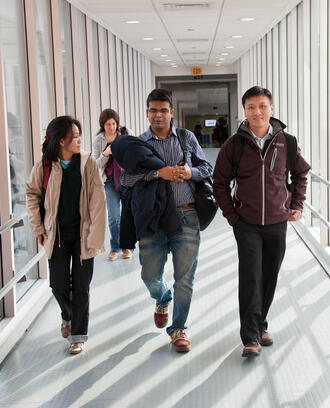MIT Sloan Fellows MBA Program
Resilience is a Growth Enabler: How to Prepare for the Next Global Supply-Chain Disruption
Jim Rice
“Individuals vary in the extent to which they acknowledged it, but every business connected to global supply chains recognized that a disruption such as the COVID-19 pandemic could occur at some point,” says Jim Rice, deputy director of MIT’s Center for Transportation & Logistics (CTL). “The fact that most organizations took few steps to prepare in advance for such an upheaval is disappointing but understandable,” he says. “The factors underlying companies’ inaction can be addressed, however, and we can use this widespread failure to recalibrate preparations for future crises.”
Rice emphasizes that, in the traditional sense, companies can’t demonstrate any return on investment from preparing for a crisis that hasn’t struck. “No CEO ever got credit for investing business resources in a hypothetical disruption,” he says, referencing the work of his MIT Sloan colleagues Nelson Repenning and John Sterman, who wrote on the subject in their iconic 2001 article “Nobody Ever Gets Credit for Fixing Problems that Never Happened.” The point, Rice says, is that CEOs and CFOs can’t show an ROI on preventing potential cost increases. That said, he notes that leaders should not wait until the aftermath of each disaster to invest in supply-chain resilience.
Rice advocates a new methodology based on the lessons learned from six major global disruptions over the last 20 years: the 9–11 terrorist attacks in 2001, Hurricane Katrina in 2005, the global financial crisis in 2008, the volcanic eruption in Iceland in 2010, the Sendai earthquake and tsunami in 2011, and COVID-19 in 2020/21. Each featured a particular set of regional and global impacts, challenges, and supply-chain disruptions. Taken as a group, though, these six crises demonstrate that supply chains fail in one or more of only seven ways.
Resilience preparedness that isn’t crisis specific
“Although the media and the general public tend to focus on failures to prepare for the disaster that just struck,” says Rice, “business leaders and supply-chain experts must adopt a broader perspective. They can’t possibly develop mitigation plans for whatever might possibly disrupt operations in the next week, month, or year—that would result in thousands of scenarios.” Given the financial impossibility of making such extensive preparations, most companies settle for ensuring they are capable of protecting the welfare of their employees. Decision-makers accept the likelihood of having to absorb losses and rebuild capabilities in the wake of a crisis.
In the middle ground between preparing for everything or next to nothing, Rice recommends that companies focus on bolstering the core capacities of resilient supply chains:
- acquiring materials (i.e., supply)
- shipping and transporting
- communicating
- converting (internal operations)
- supporting human resources (personnel)
- maintaining financial flows
- distributing to customers and consumers
“Creating actionable continuity plans for each of these seven capacities will protect most businesses—and consumers—from the worst effects of any likely future disruption,” says Rice.
Many ways to achieve flexibility
The shift in perspective Rice is advocating requires resiliency planners and decision-makers to stop thinking primarily in terms of how the next disaster is likely to diminish their capabilities and for how long. Instead, companies must determine how to recreate the seven capabilities when they are lost or diminished in the next disruption, with a special focus on those losses that would be fatal to their operations. Rather than worrying about how their capacity may be diminished, “it’s better to concentrate on identifying ‘which loss would definitely kill our business?’ and ‘how should we recreate that capability?’ The answers will be different for every business.” The present iteration of this model builds on earlier work Rice completed with colleagues Øyvind Berle and Bjørn Egil Asbjørnslett of the Norwegian University of Science and Technology in Trondheim.
In his February 2020 Harvard Business Review article “Prepare Your Supply Chain for Coronavirus,” Rice offered two simple examples of how companies should redesign their supply chains to operate effectively in an unpredictable world. The first is to develop second sources for supply, production, and distribution—preferably outside the primary source region. The second is to cultivate supply sources local to each production facility in a company’s major markets. “Both examples illustrate options for spreading risk,” says Rice. “They also have the virtue of being growth enablers because they increase response capacity, a quality that is extremely desirable—and economically justifiable—in a highly volatile world.”
Read more about Jim Rice’s supply chain model in his new blog post “The 7 Core Capacities of Supply Chain Resistance.”



